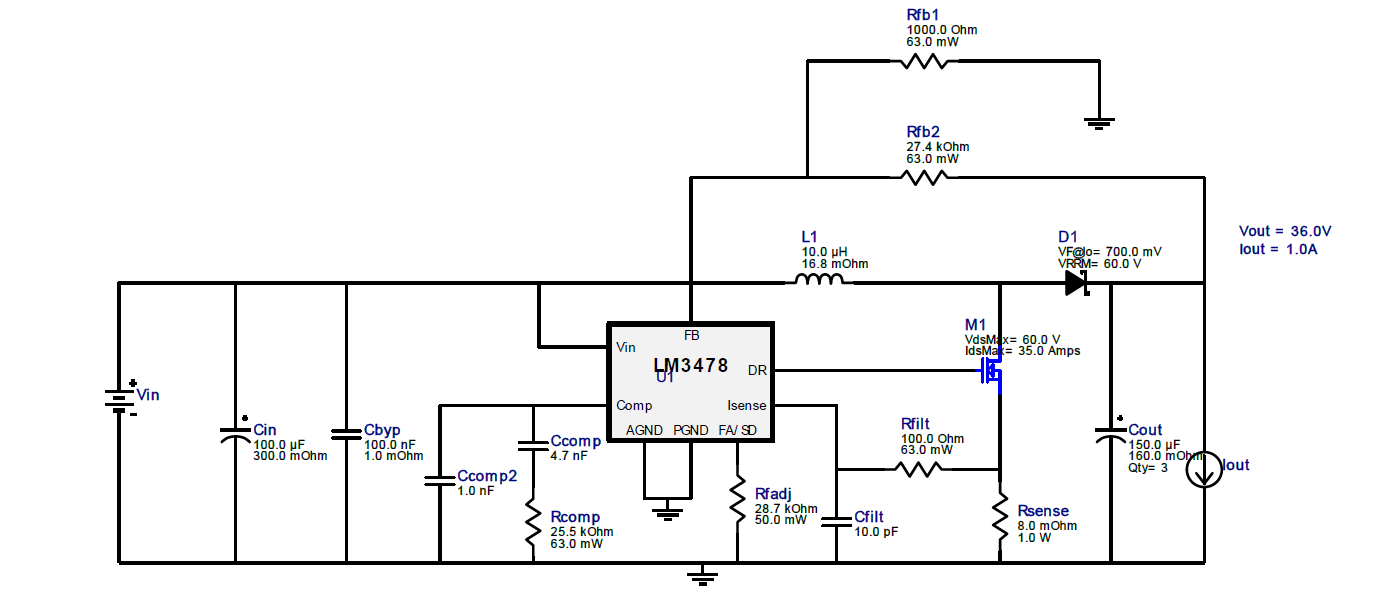Hi all
My problem is probably caused by a very silly issue, however at the moment I cannot see it. I hope someone out there can help.
As a company we have previously used the LM3478 - i.e. it layed out on a previous PCB.
We needed a new boost supply based on the same chip but with different input, output and current requirements.
I designed this on with Webench. The resultant design had the same connection layout as what was implemented on the previous PCB. I therefore, as a first step implemented the changes in components to get the required output voltage and current. This worked.
I then moved the design to a new PCB which I have fabricated. Component values are the same, but I have changed some of the components for space reasons.
When I test the board unloaded, I can see the programmed voltage on the output. Probing the drive signal, I can see the programmed switching frequency.
When I load the board with either 30 or 60 ohms, the bench power supply I am using current limits and the voltage collapses. The power supply is set to 17 V and the current limit at 3 A (the bench PSU's limit). The design is for an output of 37 V at up to 1 A with an input range between 8 ad 25 V.
I know it is not much information to go on, but does anyone have any idea why when loaded the system starts to draw more current than expected.
I will be unable to share the actual schematic or PCB layout, but I may be able to upload the Webench output, which in essence is the same.
Any help would be appreciated.


